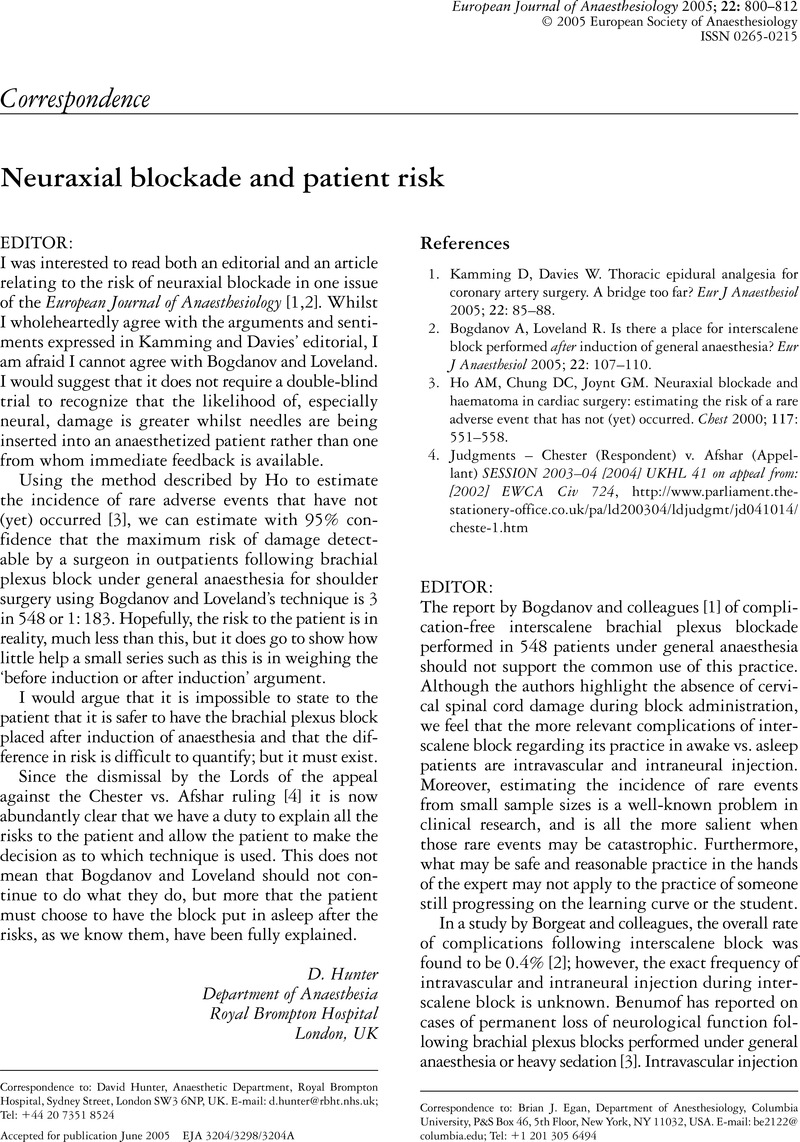No CrossRef data available.
Article contents
Neuraxial blockade and patient risk
Published online by Cambridge University Press: 15 September 2005
Abstract
An abstract is not available for this content so a preview has been provided. Please use the Get access link above for information on how to access this content.

- Type
- Correspondence
- Information
- Copyright
- © 2005 European Society of Anaesthesiology
References
Bogdanov A, Loveland R. Is there a place for interscalene block performed after induction of general anaesthesia? Eur J Anaesthesiol 2005; 22: 107–110.Google Scholar
Borgeat A, Ekatodramis G, Kalberer F, Benz C. Acute and nonacute complications associated with interscalene block and shoulder surgery: a prospective study. Anesthesiology 2001; 95: 875–880.Google Scholar
Benumof JL. Permanent loss of cervical spinal cord function associated with interscalene block performed under general anesthesia. Anesthesiology 2000; 93: 1541–1544.Google Scholar
Horlocker T. Neurologic complications of neuraxial and peripheral blockade. Can J Anesth 2001; 48: R14.Google Scholar
Selander D, Sjostrand J. Longitudinal spread of intraneurally injected local anesthetics. An experimental study of the initial neural distribution following intraneural injections. Acta Anaesthiol Scand 1978; 22: 622–634.Google Scholar
Hadzic A. Complications of regional anesthesia, http://www. nysora.com/publications/publications.htm, 11 May 2005.




